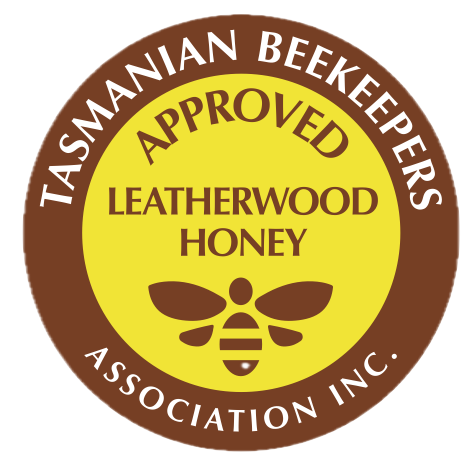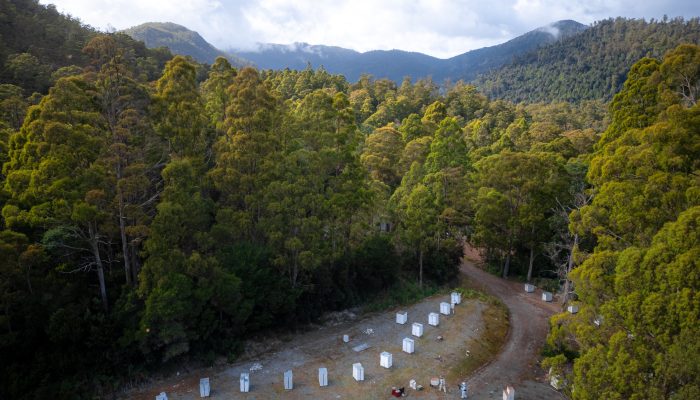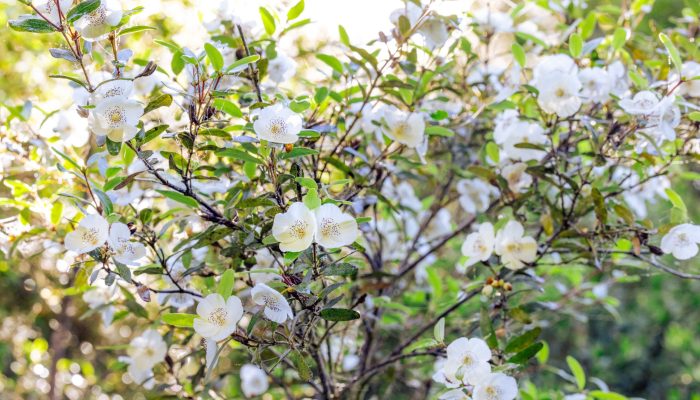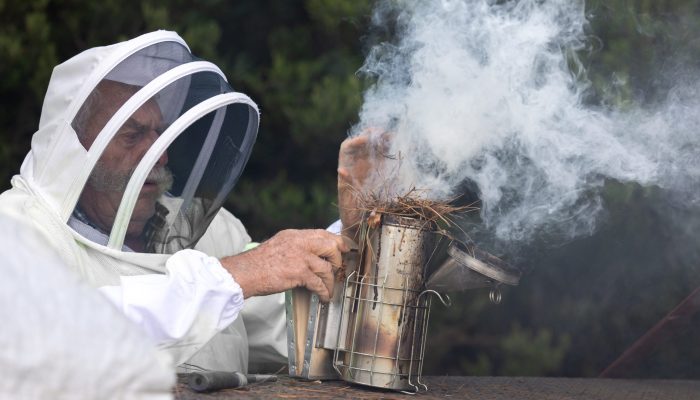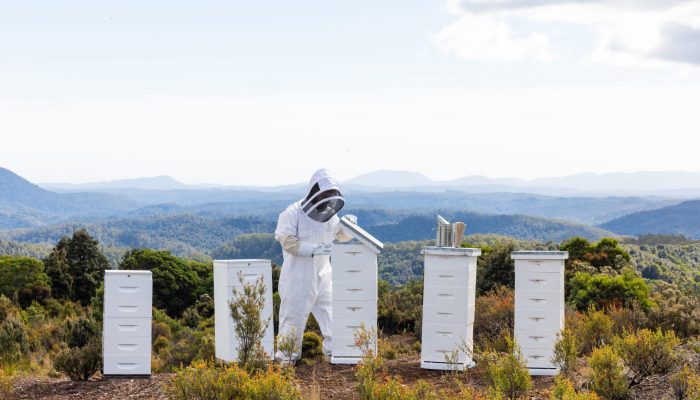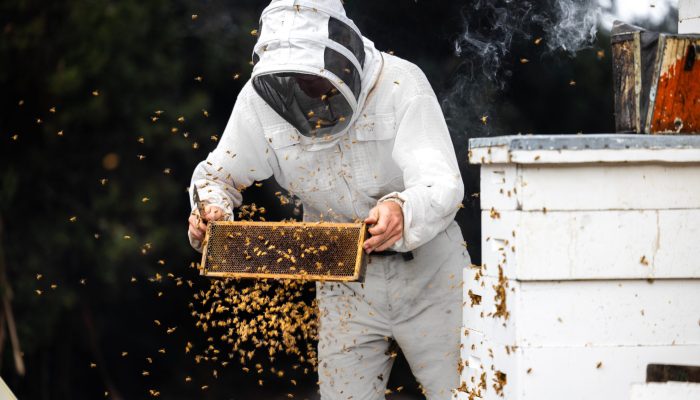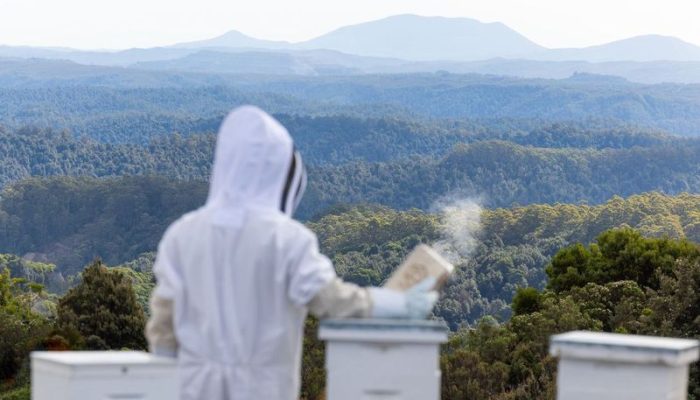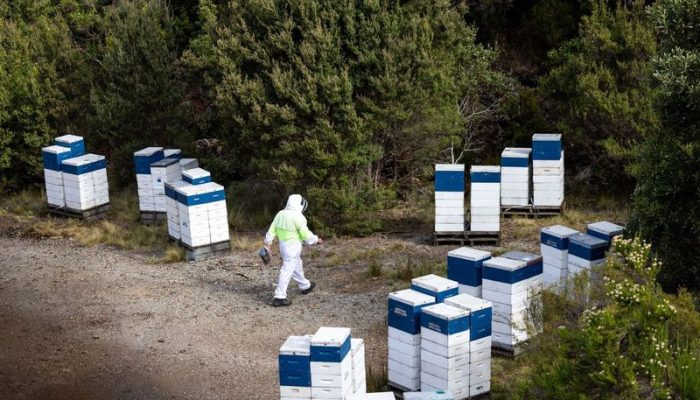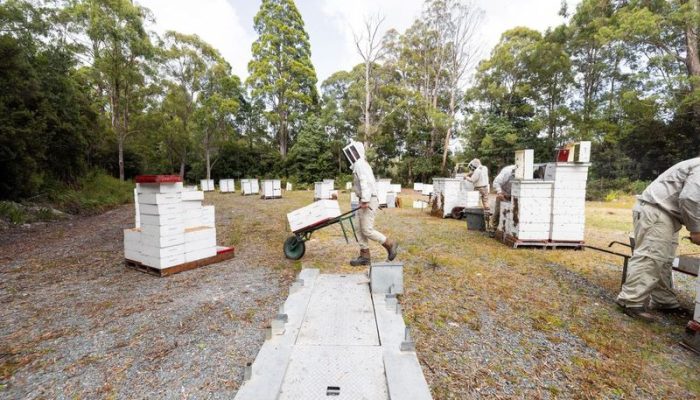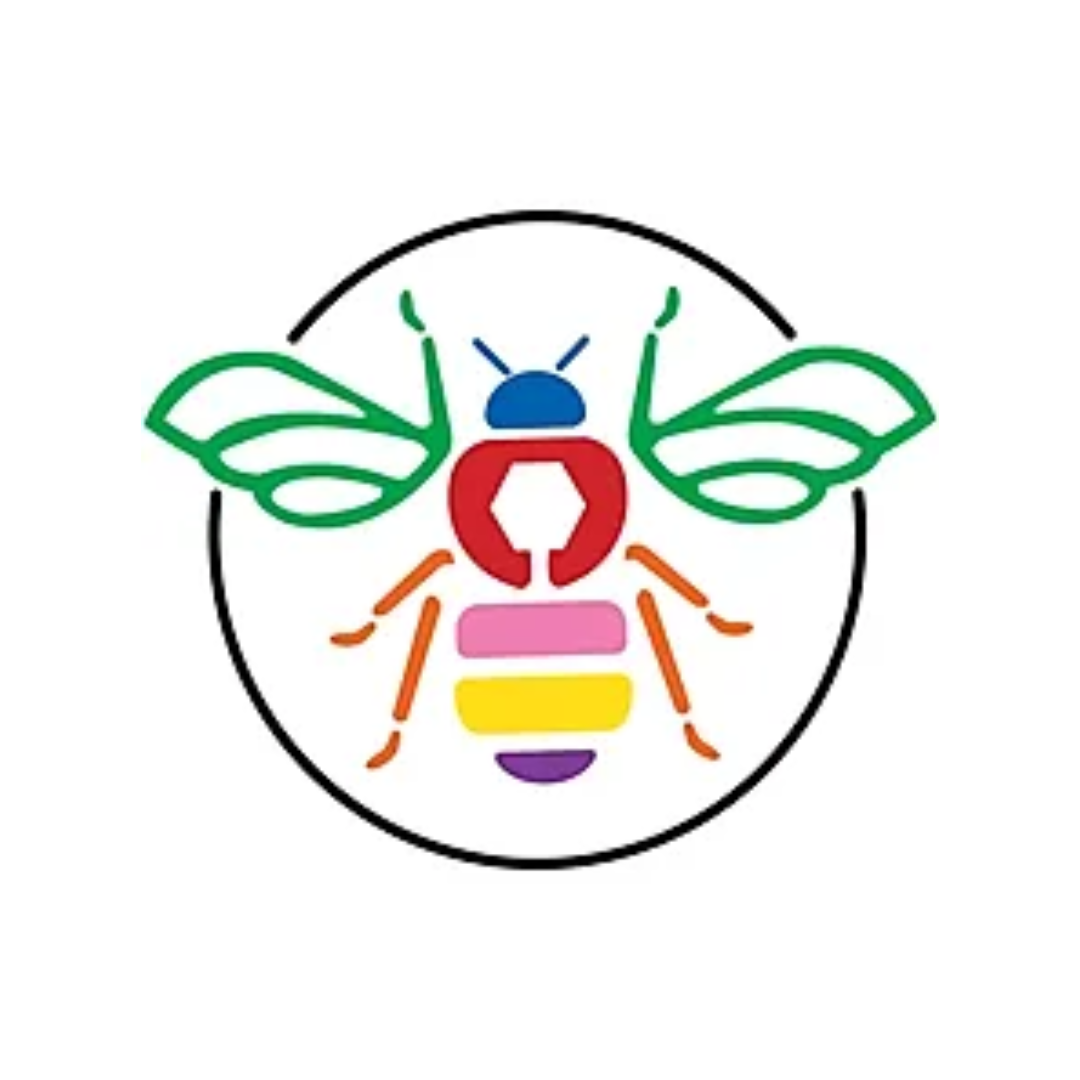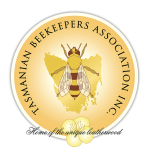Leatherwood Honey.
The world’s finest honey.
Exclusive to Tasmania’s west coast, hidden deep in the forest. The leatherwood tree may be difficult to access, but the delicious rewards are well worth the trouble.
Leatherwood honey, produced in Tasmania, Australia, comes from the nectar of the native Leatherwood tree (Eucryphia lucida). This honey is internationally acclaimed for its quality and uniqueness, often featured in gourmet markets worldwide. Its global recognition promotes Tasmania as a source of premium natural foods.
Culturally significant in Tasmania, Leatherwood honey production is a tradition passed down through generations, preserving traditional beekeeping practices and fostering local pride. Tasmanian beekeepers prioritise sustainability and the health of their bees, with honey production occurring in remote, pristine areas like the Tasmanian Wilderness World Heritage Area (WHA), ensuring a natural habitat and sustainable practices.
Unique Origin
Leatherwood honey is exclusive to Tasmania due to the island’s unique geography and climate.
The Eucryphia lucida tree thrives in Tasmania’s pristine, rugged western wilderness, making this honey a truly unique product.
Distinctive Flavour and Aroma
Leatherwood honey is renowned for its distinctive flavour and aroma, characterised by a bold, complex taste with floral and spicy undertones, creamy texture, and rich, buttery finish.
This unique profile makes it a sought-after ingredient in gourmet cooking and specialty foods.
Health Benefits
Leatherwood honey offers numerous health benefits. Rich in antioxidants, it helps combat oxidative stress and may reduce chronic disease risk.
Its antibacterial properties aid in soothing sore throats and it also contains vitamins, minerals and amino acids that support overall health.
Culinary Uses
Leatherwood honey’s unique flavour makes it a versatile ingredient. It can be used as a natural sweetener in teas, baked goods, desserts. It pairs well with cheeses, meats, and salad dressings.
Chefs and food enthusiasts use it to add a distinctive twist to both sweet and savoury dishes.
TERROIR
Eucryphia lucida is endemic to Tasmania and grows in the temperate rainforests at sub-alpine to low altitudes and thrives in a cool to warm, wet environment. It is a tall tree and produces prolific white blossoms, 2 – 3 cm in diameter, which have a high nectar flow for 4 – 6 weeks in late summer producing best when between 100 and 150 years of age. It provides viability to the Tasmanian honey industry as the consistency and volume of nectar flow is awesome.
Tasmania’s temperate rainforest, climate, topography and soil types impart unique flavour characteristics to Leatherwood honey with subtle regional and seasonal variations noticeable.
FLAVOUR
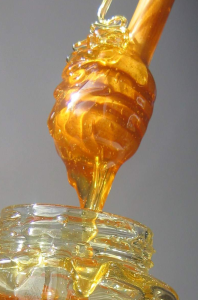
Leatherwood honey has a unique and distinctive flavour profile, being known for its strong floral aroma, which can be quite intense and fragrant. This aroma is one of its most distinguishing features.
The flavour is often described as complex and layered, with spicy undertones. It has a unique taste that can be somewhat peppery or tangy, setting it apart from more common, milder honeys.
There are also subtle earthy and woody notes in Leatherwood honey, which contribute to its depth and richness.
Despite its complex flavour, Leatherwood honey typically has a smooth and creamy texture, which enhances its palatability.
Like all honey, Leatherwood honey is sweet, but the sweetness is well-balanced with its other flavours, preventing it from being overwhelmingly sugary.
Overall, Leatherwood honey’s distinctive taste and aroma make it a prized and sought-after variety among honey enthusiasts, often used in gourmet cooking and enjoyed as a specialty treat.
PRODUCTION
Leatherwood honey production in Tasmania is a distinctive and intricate process, shaped by the unique characteristics of the Leatherwood tree and the island’s environment.
The Eucryphia lucida flourishes in the ancient temperate rainforests of Tasmania’s west coast, particularly within the Franklin-Gordon Wild Rivers National Park and World Heritage Area (WHA).
These trees bloom from late December to March, offering a short yet crucial window for honey production.
Beekeepers place hives deep within remote rainforests to access the Leatherwood flowers. This often involves transporting hives by truck a task that demands meticulous planning and significant effort due to the challenging terrain.
Throughout the flowering season, beekeepers regularly visit their hives to harvest honey, facing unpredictable weather and difficult access. Adverse weather conditions can affect the availability and quantity of Eucryphia lucida nectar, adding further complexity to the process.
Tasmania’s pristine environment ensures that Leatherwood honey remains free from pollutants and chemicals, enhancing its unique flavour and purity.
To preserve its natural qualities, Leatherwood honey is extracted using traditional methods. The process involves removing frames from the hives, uncapping the honeycomb cells, and using centrifuges to spin out the honey without damaging the comb structure.
The honey is minimally processed to retain its natural enzymes, flavours, and health benefits.
EXPORT PRODUCERS
NON-EXPORT PRODUCERS
RECIPES
Honey Pork Roast
INGREDIENTS
- 1.5kg boned leg of pork
- Pepper marinade
- 4 cup honey
- 3 tablespoons medium dry sherry
- 6 tablespoons light soy sauce
- 3 tablespoons hoisin sauce
DIRECTIONS
- Remove the rind from pork, lay out flat, cut into 4 equal size strips, slash each 3 or 4 times diagonally and season with pepper.
- Combine marinade ingredients, pour over pork, cover and refrigerate overnight.
- Place meat on a rack in a baking dish 3cm filled with water and bake at 190°c for 1⁄41 hours, brushing occasionally with marinade.
- Serve hot or cold.
Serves 4.
Honeyed Fish
INGREDIENTS
- 500g thick fish fillets e.g. ling or gem
- 2 tablespoons lemon juice
- 1 clove of garlic, crushed
- 1⁄4 teaspoon dried marjoram leaves
- 2 teaspoons teriyaki sauce
- 1 tablespoon honey, melted
- 4 zucchini, sliced thickly
- 125g baby mushrooms
- 1red capsicum cut into square pieces
DIRECTIONS
- Cut fish into lengths, approximately 2.5cm wide, and place in a bowl. Combine lemon juice, garlic, marjoram, teriyaki sauce and honey, pour over fish and cover. Marinate 2 hours.
- Thread fish and vegetables on skewers and grill for 3 minutes on each side, basting with remaining marinade. Serve with rice.
Honey Beef Casserole with Coriander Dumplings
INGREDIENTS
- 1 kg chuck or blade bone steak, cut into cubes
- 2 tablespoons plain flour
- 2 teaspoons curry powder
- 1 teaspoon salt
- 1⁄2 teaspoon freshly ground black pepper
- 2 tablespoons oil
- 8 small pickling onions, peeled
- 2 cloves garlic, crushed
- 2 cups beef stock
- 2 tablespoons honey
- 2 teaspoons mustard
- 250g button mushrooms
- 2 tablespoons oil, extra
- 1cup self raising flour
- 1teaspoon salt
- 90g shredded suet
- 2 tablespoons coriander or parsley chopped
- 1⁄4 cup buttermilk
DIRECTIONS
- Toss the meat in flour, curry powder, salt and pepper.
- Heat oil in a large, heavy-based deep frypan or dutch oven. Add meat and flour mixture and fry until golden. Add onions, garlic, stock, honey and mustard. Cover and simmer for 2 hours.
- Sauté mushrooms in extra oil and add to casserole.
- Make dumplings by sifting flour and salt into a bowl. Add suet and coriander then stir in buttermilk to form a soft dough. (If the mixture is too dry add a little water). Divide into 6 balls, place on top of casserole and cook with the lid on for a further 30 minutes.
GALLERY

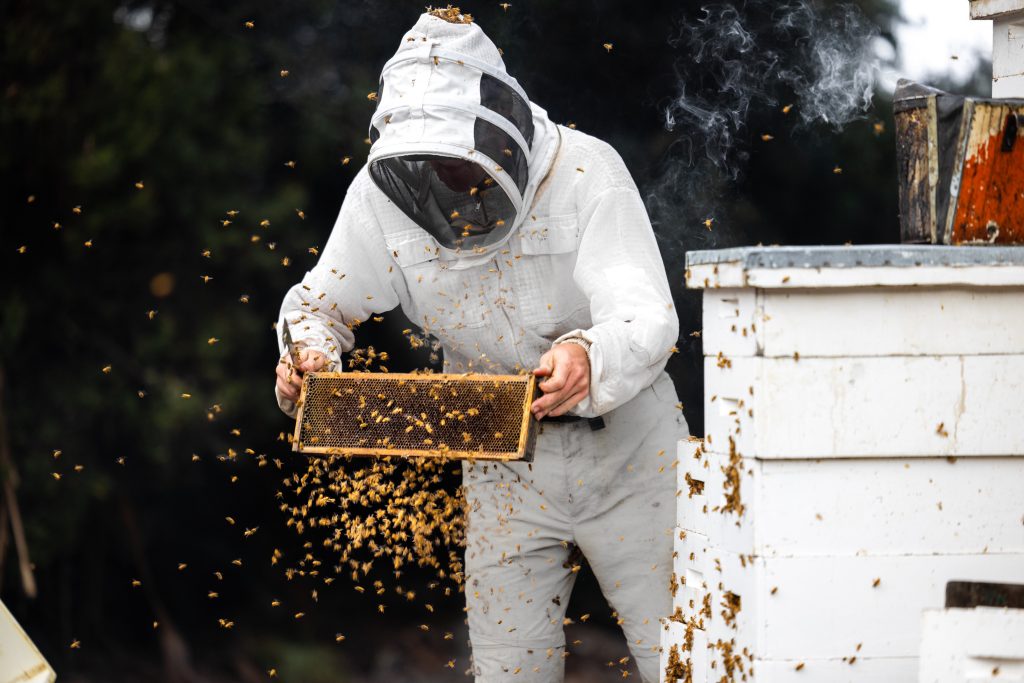
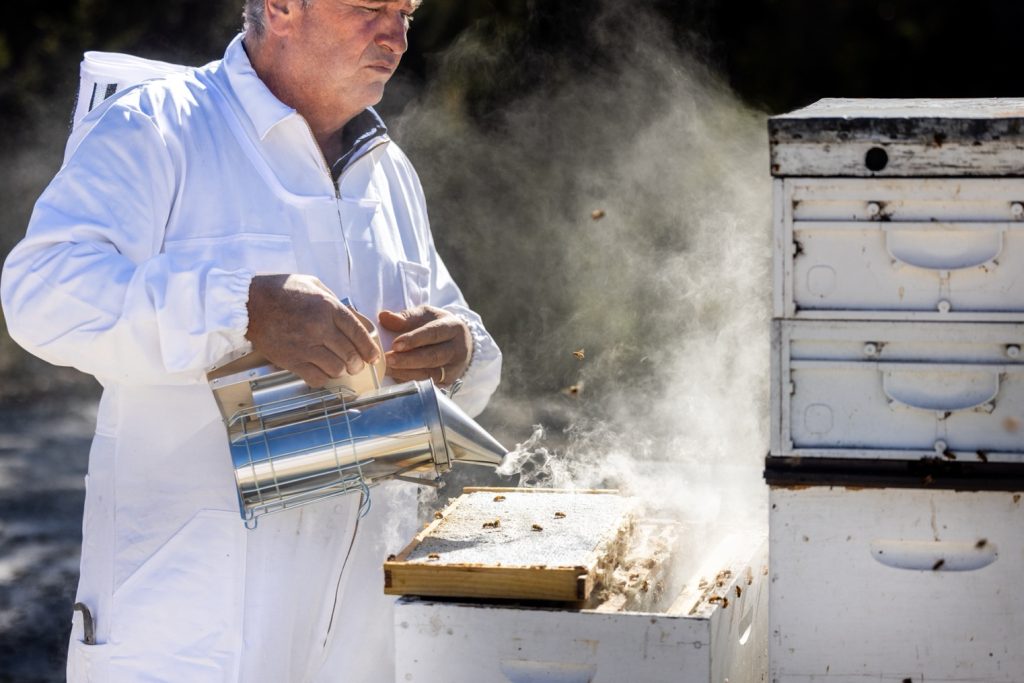
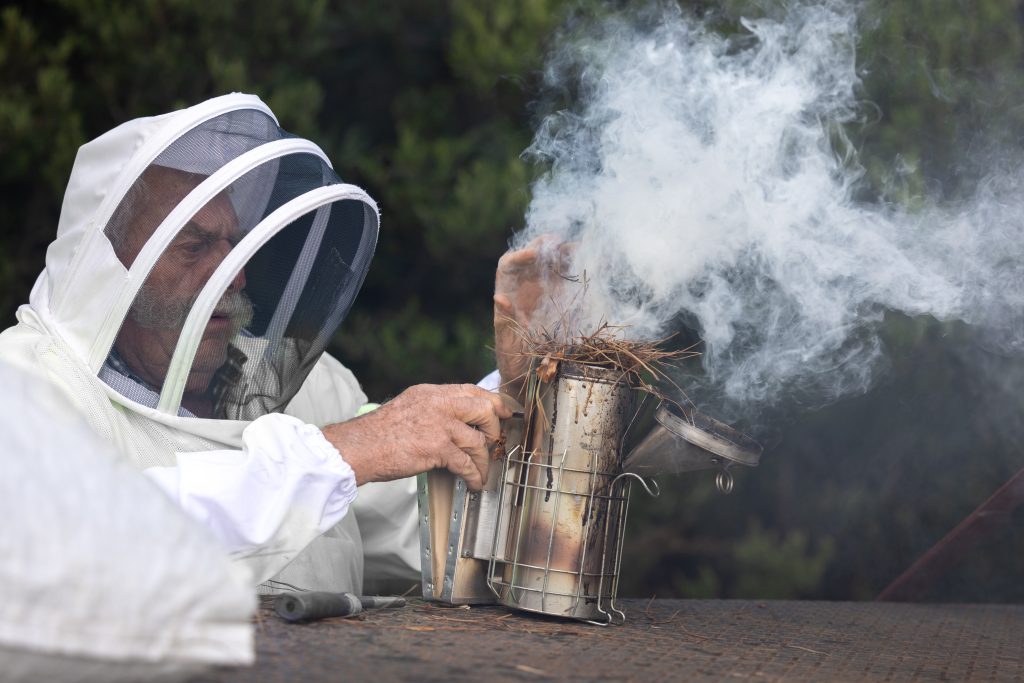

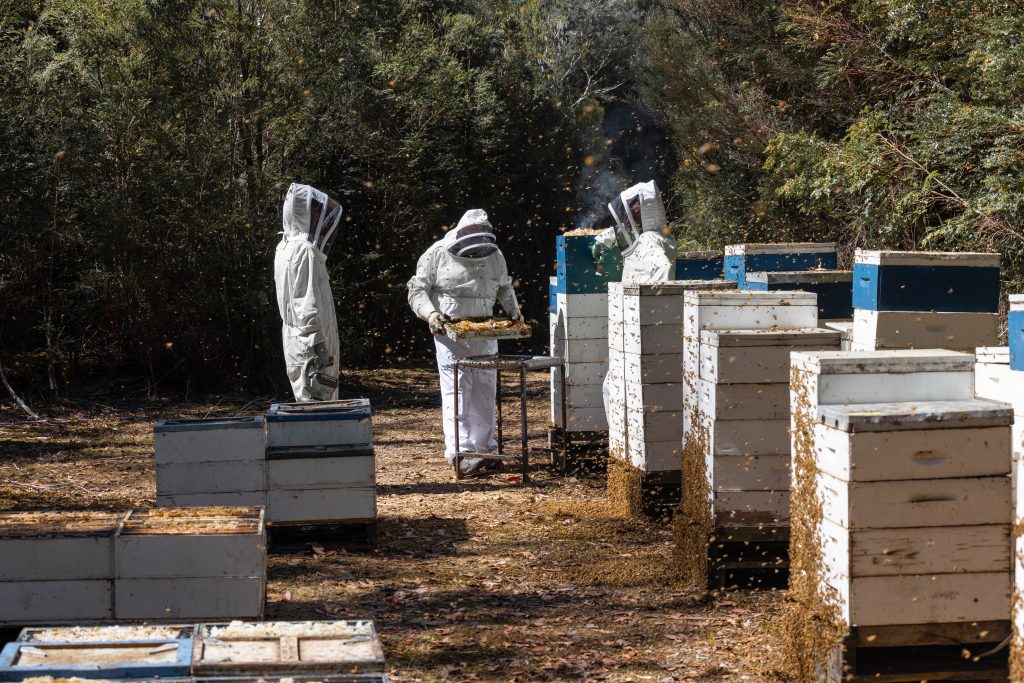
ABOUT
The Tasmanian Beekeepers Association represents beekeepers at local, state, and national levels, advancing Leatherwood honey production and industry development.
Managed by an Executive team of a President, Vice President, six Committee Members, and four affiliated bodies, they appoint a Secretary and Treasurer for administration and finance. The Executive meets about five times a year.
